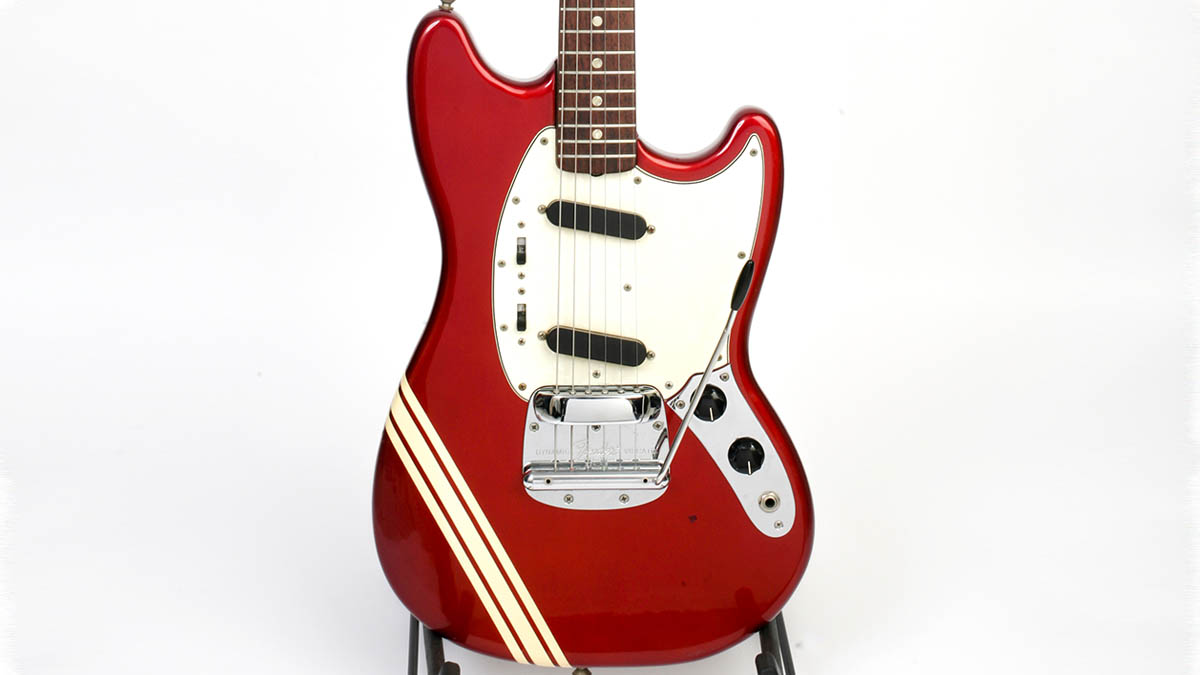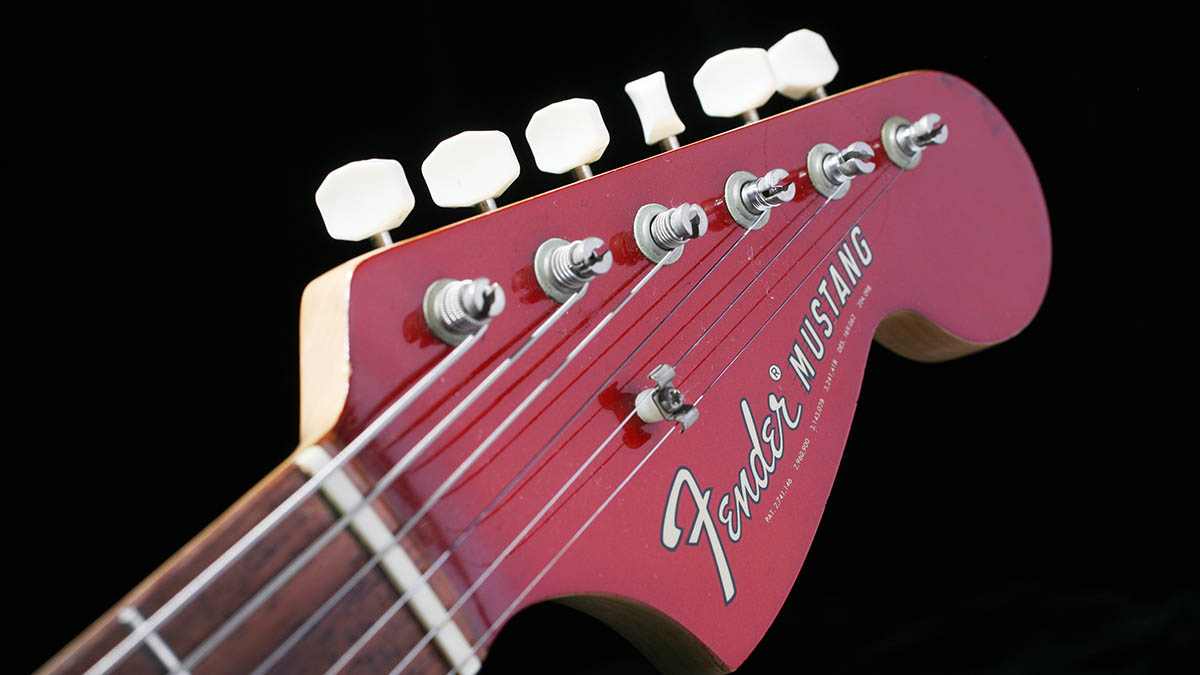How the Fender Mustang went from student guitar to cult classic
Intended for the budget-conscious musician, the Mustang eventually found a fan club in the likes of Todd Rundgren, Theresa Wayman and Kurt Cobain

Fender’s practice of branding products in an effort to appeal to aspiring students goes back to the very early days of the 1940s with the Princeton lap steel and guitar amp. And in the mid-’50s, following the groundbreaking success of the pro-level Telecaster and Stratocaster models, the firm turned its attention towards producing solidbody electric guitars for students.
Appearing in the 1956 catalogue alongside the Harvard amp, the single-pickup Musicmaster was partnered with the dual-pickup Duo-Sonic. Advertised “for adults and young musicians with small hands”, both were touted as “¾ size” and featured a short 22.5-inch scale length (Strats, Teles and Jazzmasters have a full 25.5-inch scale).
By the mid-’60s, Leo Fender’s business partner, Don Randall, was pushing to extend their range of student solidbodies with a vibrato-equipped model. Thus, in 1964, the Mustang appeared sporting Fender’s Dynamic Vibrato system. Though it retained the same 22.5-inch scale as its predecessors, the new dual-pickup guitar was also offered with a Jaguar-style 24-inch scale length, and this proved to be the most popular option by far.
Featuring a solid maple neck with a rosewood fretboard and an offset poplar body, the Mustang came in a choice of three standard colours: Red, White and Blue (otherwise known as Dakota Red, Olympic White and Daphne Blue on Fender’s custom colour chart).
Priced $189.50, the Mustang sat between the $159.50 Duo-Sonic and $209.50 Tele on the list. Much like its automobile namesake was for Ford in 1964, the Mustang was a massive success for Fender, the orders stacking up way beyond expectation. Its four-string equivalent, the 30-inch scale Mustang Bass, appeared a couple of years later and found favour with some seasoned musicians including The Rolling Stones’ Bill Wyman.

Other notable Mustang Bass players include Justin Meldal-Johnsen (Beck, St Vincent) who currently has his own signature model, and Tina Weymouth of Talking Heads.
Although the Mustang and Mustang Bass were discontinued in the early ’80s, the ’90s saw Fender offsets explode in popularity, thanks to guitarists such as John Frusciante, J Mascis and Thurston Moore.
Get The Pick Newsletter
All the latest guitar news, interviews, lessons, reviews, deals and more, direct to your inbox!
Similarly, Kurt Cobain had great cultural impact in the earlier part of the decade and the Nirvana frontman did much to (re)acquaint guitarists with the humble Fender Mustang. The Competition Mustang he played in the Smells Like Teen Spirit video became one of the most expensive guitars ever sold at auction in 2022, reaching $4,550,000.
Though it is often thought of as inferior to the iconic Strat or Tele (the ‘student’ tag doesn’t help), the Mustang has served many a guitarist well over the years, including Adrian Belew, Todd Rundgren and Theresa Wayman of Warpaint.

In recent times, the sheer breadth of choice and relative affordability of Fender’s classic electric guitars has rendered the concept of a bespoke ‘student’ design somewhat irrelevant.
There’s now a Strat, Tele, Jag and Jazzmaster for every budget from Squier to the Custom Shop. But it’s not just the ‘big four’ that sail from the low hundreds and way past the thousand mark. Right now, the “100 per cent designed by Fender” Squier Bullet Mustang HH is a steal at £149.99, while the American Performer Mustang will set you back well over a grand.
And with original examples now pushing a few thousand dollars on the vintage market (sometimes more for a Competition Mustang), owning one of these classic guitars isn’t just a cheap option any more.
The evolution of the Fender Mustang
- 1964: Mustang released; Dynamic Vibrato; Red, White and Blue finishes
- 1965 to 1966: Some with slab rosewood fretboard
- 1966: Mustang Bass released
- 1967: No “offset contour body” headstock decal; vibrato patent number
- 1969: Body and forearm contours; Competition striped finishes (Red, Orange and Burgundy); matching headstocks
- 1970: Sunburst finish available
- 1973: Olympic White finish available; Competition finishes discontinued
- 1974: Black and Walnut finishes available
- Late ’70s: Fretted maple neck optional; Antigua, Wine, Blond and Natural finishes available
- 1981: Discontinued
Rod Brakes is a music journalist with an expertise in guitars. Having spent many years at the coalface as a guitar dealer and tech, Rod's more recent work as a writer covering artists, industry pros and gear includes contributions for leading publications and websites such as Guitarist, Total Guitar, Guitar World, Guitar Player and MusicRadar in addition to specialist music books, blogs and social media. He is also a lifelong musician.
“It holds its own purely as a playable guitar. It’s really cool for the traveling musician – you can bring it on a flight and it fits beneath the seat”: Why Steve Stevens put his name to a foldable guitar
“Finely tuned instruments with effortless playability and one of the best vibratos there is”: PRS Standard 24 Satin and S2 Standard 24 Satin review



![A black-and-white action shot of Sergeant Thunderhoof perform live: [from left] Mark Sayer, Dan Flitcroft, Jim Camp and Josh Gallop](https://cdn.mos.cms.futurecdn.net/am3UhJbsxAE239XRRZ8zC8.jpg)








